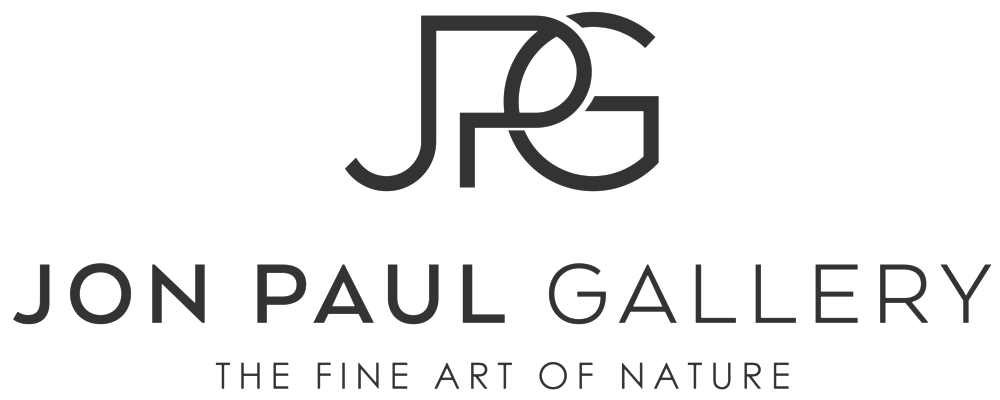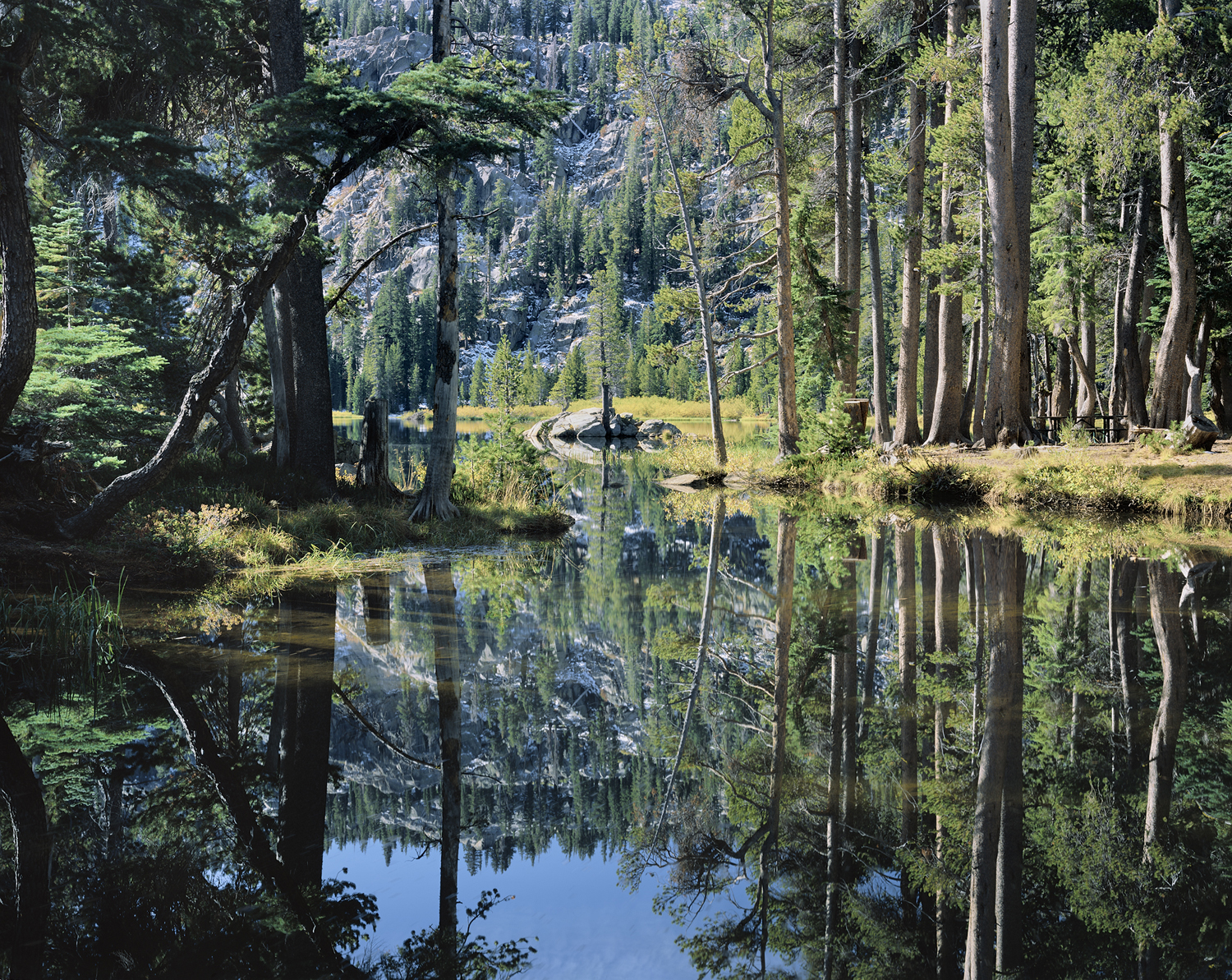Panoramic landscape photograph composed by large format landscape photographer, Jon Paul. Lenticular clouds, sunset light, cloud inversion, Emerald Bay, Lake Tahoe. 5 digital images manually stitched to create a large panoramic image file suitable for large scale fine gallery prints.
Read More"Eternal Light"
Large format landscape photograph taken in Antelope Canyon, Arizona using Fuji Velvia 50 4x5 inch transparency film by photographer Jon Paul.
Read More"Corn Lily One"
Large format landscape photograph taken in South Lake Tahoe, California using Fuji Provia 100F 4x5 inch transparency film by photographer Jon Paul.
Read MoreFallen Leaves, Liquid Light
Large format landscape photograph taken in Zion National Park using Fuji Velvia 50 4x5 inch transparency film by photographer Jon Paul.
Read MoreRemembering the Experience...and Photography.
“Beaver Pond, Snowfall” is an image that exemplifies both the beauty that pulls me to mountain adventures, as well as the dramatic natural experience that I remember so vividly and moves me to carry big cameras and expose big sheets of film in insane conditions. On this particular day the snow was falling heavily. In the time it took me to set up my camera and expose my sheet of film (20-30 minutes), at least 4 inches of snow came down. As I looked out of my window just a couple of hours before, I had to laugh. It was a ridiculous idea to venture out, but I had “the mood” of an image in mind.
Needless to say, I layered up with warm under layers and Gore-tex outers, grabbed my camera pack and headed out into the storm. I wasn’t going far, but my anticipation was high. Now, while I had an image type in mind (intimate details close, soft hints of “foggy” background in the distance) I was open to the experience. I wandered through this quiet landscape taking in every detail. With the mountains shrouded in falling snow, the landscape became smaller. I literally felt within the landscape. That feeling is what I was envisioning for my image, and was reveling in as part of my life. That is what I call, the Fine Art of Nature!
That is what makes this image such a success. That, and a little artistic and technical follow up. Once I was in my happy place with the natural conditions and landscape, I was able to begin composing the scene in a way that represented what I was feeling. I knew that the whisper of large pines on the distant mountainside peaking through the blizzard would give depth and scale to my scene. Next I wanted to include subject matter that provided intimate detail of the beaver pond environment which made the viewer feel as though they could walk right in to the image. As I wandered I found this spot on the far side of the pond that made me stop. This was it. It was time to refine and compose.
Take a private workshop / tour in your favorite season!
I was attracted to the leading line of the foreground log accompanied by the channel that the beavers swim through when leaving the pond to feed on Willows. The curved line of that channel was interesting, as were the snow covered grasses in the immediate foreground. I included the large boulder on the left, which added strength to an otherwise soft feeling scene. I positioned it in such a way that it both leads the eye to the center of the image, and creates a layering effect between foreground and background. The clarity of the texture and contrast on the granite adds strength to the composition. I used the clump of branches to the right side in the pond, along with their reflection to balance out the visual weight of the boulder and add further detail. As the far side of the pond (the beaver dam) was softened by the snow, it added a little middle ground detail that enabled a smooth transition into the delicate background. The silhouettes of the pine trees on the distant mountainside are what had brought me out into the storm to begin with. The background adds context and scale, while enabling the viewer to feel as though they are standing in a more intimate landscape. Due to the long exposure required (low light + slow film) to capture this scene on film, the falling snow is rendered as a fog, without detail. I believe that softens the mood of the scene and depicts the feeling of solitude I experienced and wanted to share.
“Beaver Pond, Snowfall” is one of those images that brings me a rush of quiet emotion when viewing it. I can feel the enveloping weather. I can hear the snowflakes landing on my hood. I remember standing on the edge of the pond as snow piled up on all of my gear. It was a black and white day, spent alone in a beautiful, peaceful place. I am pleased that I was able to translate all of that onto a 4x5 inch sheet of black and white film. And, I’m happy to be able to print this image, so you can experience this wonderful piece of nature on your wall.
Collectors Tip: Many collectors are intimidated by the idea of collecting black and white images if they don’t have a stark, modern space in which to hang them. The reality is, a piece of art on the wall stands on its own. It doesn’t have to blend. Furthermore, black and white photographs can be framed in numerous styles to fit your personal taste. They can even be printed on aluminum and hung without a frame! just ask one of our gallery representatives to help walk you through the possibilities!
Photographers Tip: Most often, when shooting black and white film, I will use “contrast filters”. These are colored filters placed in front of the lens that help produce tonal separation in a color landscape which we are trying to record on black and white film. However, when shooting in a blizzard where there are no color tones to separate, I use no filter at all in front of my lens. Given the low contrast nature of the scene, I will most often have to increase contrast while developing the film (n+1, n+2), and again later while working in either the traditional or modern (digital) darkroom. Capturing images while the snow falls gives us a relatively easy (narrow) exposure range to capture. We can then work on the straight forward contrast control at home.
Note: I am primarily a “cross platform” photographer. I shoot large format sheet film and then drum scan my film on my personal fluid mount drum scanner. This creates a massive (hundreds of megabytes) digital file which I them adjust in both Adobe Lightroom and Adobe Photoshop software. For black and white images, I am primarily using curves adjustment layers to set my whit point, black point and contrast levels, both globally and locally. I make my general / basic adjustments in Lightroom, and most of my local and very detailed adjustments in Photoshop.
Would you like to go out in the field and look through the lens with me? Would you like to take your photography to the next level, capture a particular location with your camera or simply tour the locations of some of my most iconic images? Take a private workshop / tour in your favorite season!
Details:
Camera: Canham 5x7 Metal Field Camera with 4x5 Film Back
Lens: 90mm
Film: Ilford FP4 plus 4x5 inch Black and White film
Developer: Diafine
Filter: N/A
Tripod: Gitzo 1325 Carbon Fiber
Tripod Head: Really Right Stuff BH55 Ball Head
DON'T MISS OUT ON WHAT I HAVE TO SHARE. HERE ARE SOME HELPFUL LINKS:
My FREE Fine Art of Nature Insider : https://www.jonpaulgallery.com/newsletter/
My website: https://www.jonpaulgallery.com/
Photography Workshops / Tours: https://www.jonpaulgallery.com/tours/
My Blog: https://www.jonpaulgallery.com/blog/
Subscribe to My YouTube Channel: https://goo.gl/dJXMUQ
If you’d like to improve your images captured with Provia 100F film,
get my FREE Provia 100F Cheat Sheet
Results: Sharing the Image 3
Compositions in nature grab my attention with the way they make me feel. My art is the translation of that emotion. I use my big film cameras because they enable me, more than any other media I've tried, to do justice to how a place makes me feel. This image is not the result of capturing 1,000 images and choosing which one works. This is THE composition and exposure that I was moved enough to create. These experiences change my life. They keep me going. The final images I produce are my attempt to share that with you. That is "The Fine Art of Nature".
Read MoreA happy photographer, Jon Paul, with his 8x10 film camera in Grand Teton National Park.
How I Used Change to Re-Affirm My Photographic Process
Often times, we look outside ourselves to find our path. As an accomplished professional of almost two decades, I occasionally look outside myself to see what I should be doing. How I should be doing it. Which path is being followed by others. It can appear as though everyone else is right. I often feel lost. The self doubt of an artist is difficult, but can be re-affirming.
Read More

